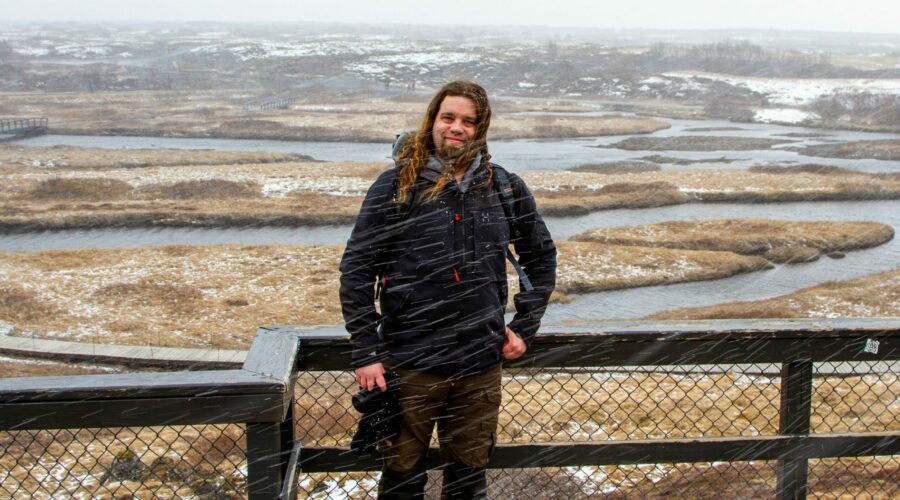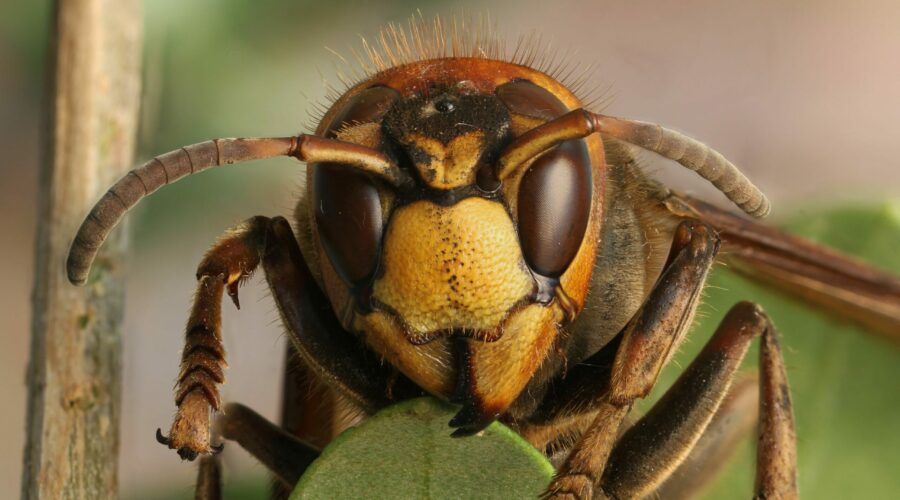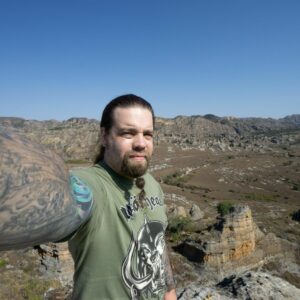Interview with Wildlife Photographer Janne Asp
We’re excited to welcome Janne Asp to Gardenize, an aspiring wildlife photographer, a big nature enthusiast who has discovered his hobby for capturing stunning images of wildlife, animals, insects and plants.
In a series of posts, we will feature Janne’s photos on our channels for your inspiration. Through his careful observations of wildlife and quality time spent outdoors, he hopes to continue improving his photography skills and inspire others to pursue their love of photography.

How did your love in nature and animal photography started?
I have always been interested in nature and grew up being out in the woods and fields. It’s hard to describe, but I have the nature in my blood, it’s where I feel at home. I do not remember when I first got my eyes open for photography. It seems to me that I have always had a camera of some sort. The thing that really got me stuck was when I got my first camera with macro function. I became so fascinated by being able to photograph small insects and to be able to see all the details. Sometimes it’s hard to believe that the bug I just took a pic of is the same that I saw with my eyes when I see all the details in the photo. After I started with a normal digital compact camera, I have been taking many small steps to upgrade my equipment.
The macro branch of the photography is quite fun since it involves a lot of DIY work. It’s rarely the most expensive gear that is the best and many times the best solution is something that needs to be built by yourself.
How did your interest in gardening begin?
My interest for gardening is included in my interest of nature, I simply like things that grow. When it comes to gardening, my problem is that I live on the sixth floor and thus have nothing more than a small balcony to grow plants on. It is still very fun to grow things and I often order seeds from various plants to cultivate at home.
For a while I was very into bonsai, but there I also was very limited by the space at home. Should I ever move and get more space outdoors, I will probably take up this interest again.
What is your favourite bird, animal, or insect?
I have many favorites, common and unusual, but some of the ones I like best are probably these: Puffin, an incredibly charming bird that has a very special look. I do not remember exactly when, but I read a book as a child that contained puffins and already there I had decided that I wanted to see them. A couple of years ago, I went to the island Runde in Norway and was lucky enough to see them in the thousands.
The giraffe weevil, which is endemic to Madagascar. I really wanted to see this special beetle when I was there. However, it seemed that most guides thought you were a little tricky when you wanted to photograph small insects instead of the monkeys. In the end, I learned that it was just a matter of finding the right kind of shrub, and it was done quickly.
I also love watching plants that have been growing in weird ways. Like when they shape themselves around objects or have been growing in windy areas. I once visited the city Pripyat next to the power plant Chernobyl in Ukraine, and it was a very odd experience to see how nature have started to reclaim the city.

What animal is hardest to photograph and why?
Good question, I think most animals are tricky in their own way. Small birds, for example, are really annoying because they do not sit still for that long. When it comes to insects, it is usually the shaking when holding the camera that causes the problems because you get so close. When I run into a new animal, it’s myself that is the problem because then I get a little extra nervous of getting a good picture, and then it rarely gets good. In most cases a little thinking of the situation solves the problems.
The kingfisher is the bird I took, and missed, the most photos of, so I think I can choose it as the biggest cause for photo-headache. It likes to sit inside its burrow and flies straight out when it has to hunt. When it comes back, it usually lands on a stick outside the nest and then jumps into the hole again. There will be a long wait and a lot of photos taken by chance once you see it. In one day I can take up to a thousand photos, discard 90% right away. Look closer at the remaining 10% and end up with 10-20 that looks ok. And in a good day I even get a shot that I like.
Tell us an anecdote from one of your amazing trips while photographing?
The first thing I think of when it comes to travel stories is when I was in Uganda with a friend. It was a tour with about five different destinations that I got many fond memories from.
A memory that is extra special is when I came to a village called Bwindi where I was going to photograph mountain gorillas. It all started with a couple of hours of hiking in a generous slope up in the rainforest. When we finally got to the apes, the guides cleared away some bushes around a large male, and we could photograph until he lay down and fell asleep. We were definitely not interesting to him. We continue further ahead and photograph some females with their offspring.
This is one of the few times when I have been out photographing where I actually chose to put my camera down for a while and just look at everything with my own eyes. Both animals and nature were fantastic, and it felt important to be able to take in the whole experience. It was breath-taking and almost like a spiritual experience for me.
Shortly after this, a lightning blast and a deafening bang comes just above my head, followed by one of the worst rains I have experienced.
It is a miracle that the camera equipment was not destroyed. It took us a number of hours in direct sunlight the next day before the equipment was dry enough to be used again.
What are your favorite destination to travel and take nature photographs?
It is very difficult to choose one single place because I like the variety. Every place has its charm. I would very much like to go back to Iceland for a more photo-oriented trip. It’s a fantastic place, and it looks like nothing else in this world. Of the places I have been, I think the Masoala Peninsula in Madagascar was the best. It took three hours to get there by a small boat. The place I lived in only had room for four parties and was located directly on the beach. The rainforest went all the way down to the beach, and it was possible to walk for hours without seeing another tourist. It was only a couple of hours a day that there was electricity, so it was important to charge the camera batteries.
Both during the day and at night I was out with a guide in the woods and photographed lots of animals.It is an extremely poor country but this part of it felt like a small slice of paradise.

Favorite time of year to photograph?
I have to say spring. Just when it gets warmer and everything comes to life again is the beginning of the time of the year when I am most active as a photographer. Before all the plants have grown their leaves, there is a lot of activity among the wildlife, but it is not obscured by the greenery. Had I lived further north, I would probably have appreciated the winters more, but here in Gothenburg they are more gray than white. I spend a large part of the winter by editing photos that I did not have time for during the rest of the year.
Do you have any advice for our fellow nature and animal photographers?
I would like to say that all photos that are taken are good photos. Sometimes it feels a little daunting to pack all the equipment, with the tripod and everything else. On such occasions, it is nice to bring a compact camera, or to just use my phone. As long as you are happy with the photo the technology is less relevant, for me at least.
What has made a big difference for me is to use a tripod and plan the photography a little better. The latest addition to my gear, a gimbal tripod head, is absolutely fantastic when it comes to bird photography. So even if it adds a few extra kilos to the backpack I always bring it. I also think it is very important to have someone to brainstorm your ideas with. It’s easier to get encouraged to take better photos, and it is always good to be able to discuss technique and equipment with someone who has the same interest.
And always bring coffee. Always!

How would you encourage our readers to go out there and start photographing animals, birds or insects?
To begin with, there must be an interest. It kind of says itself, but it is really hard to get good at something otherwise. I know some people really enjoy looking at photos of birds, plants and lots of other things. But there are a lot of time and money put into my photos and if you don’t feel that it would be worth it, maybe it’s better to try something else. You can also include your photography in an existing hobby. Gardening for instance. Imagine trying to take photos of as many flowers as you can for a whole year.
If there is an interest, I think you should think about what you want to photograph. It is difficult to get a good setup that covers all kinds of photos. Especially when it comes to packing the gear into a backpack. Photography is a bit of a material sport, but you should definitely not be discouraged. It is better to start on a lower level and upgrade the equipment as knowledge and interest increase. There is very good information on forums about how to get started, and it does not take long before you find that particular camera, or lens, that suits your own interests.
What is your next project and destination to travel to photograph?
I have some places I dream of being able to go to. The Galápagos has always been on my list. The nature there looks absolutely fantastic, and it would have been so much fun to be able to photograph the sea iguanas and tortoises. Australia would be great to experience. There is such a variety of nature and animals there. Svalbard is another place that is interesting. Polar bears and the aurora borealis would be a fantastic experience. The whole world is interesting to me. You can always find something new to photograph, regardless of whether you travel around the world or just go out into the woods at home.
Right now I only have one small trip booked. It is Sweden’s second largest island, Öland or IsIand-land in english. It has a very rich bird life and a lot of wild growing orchids. The biggest reason, however, is that there are relatively large populations of the European stag beetle there, which is Europe’s largest beetle. That stag beetle is something I have long dreamed of seeing, and taking photos of.
If our readers would like to read more about you, do you have any page they can follow?
At the moment I try to upload as much as I can to my Flickr account. I love doing a lot of post work of my photos and the option to be able to place the photos geographically on a map is a really great feature. I used to have my own website, but maintaining it took so much time compared to how much I actually used it, so I decided to shut it down. Furthermore, I have my own domain pointed to my Flickr-site just for making it look a bit more flashy, and if I decide to move to another site it will be easy for any followers to tag along. www.janneasp.se
ABOUT JANNE
Janne Asp is an aspiring wildlife photographer, a big nature enthusiast who has discovered his hobby for capturing stunning images of wildlife, animals, insects and plants. He lives in Gothenburg together with his family and lizard Lemmy, and finds inspiration for his work with the array of nature that Sweden and the world provides. Through his careful observations of wildlife and quality time spent outdoors, Janne hopes to continue improving his photography skills and inspire others to pursue their love of photography.
If you’d like to learn more about Janne, please visit his website.

